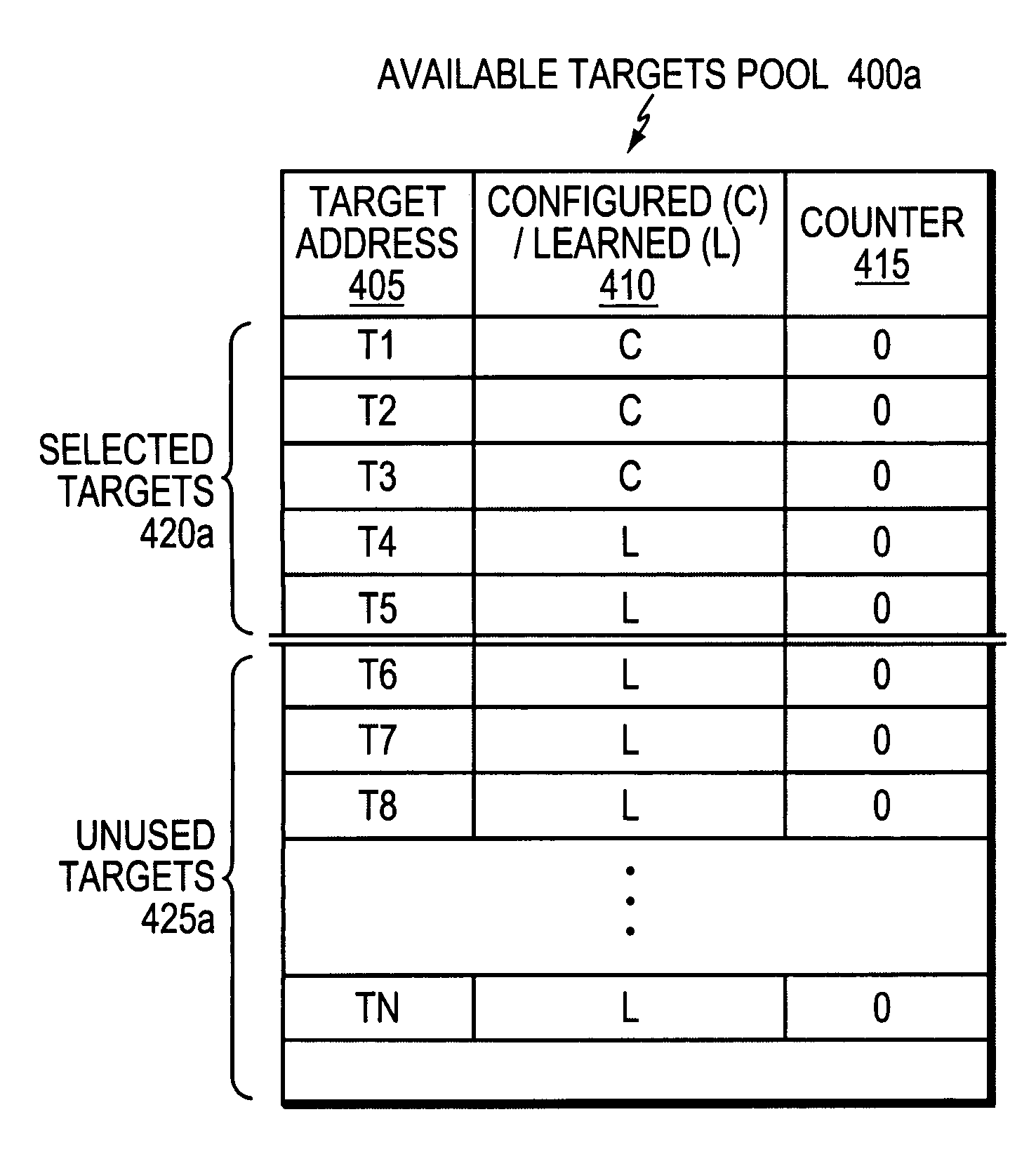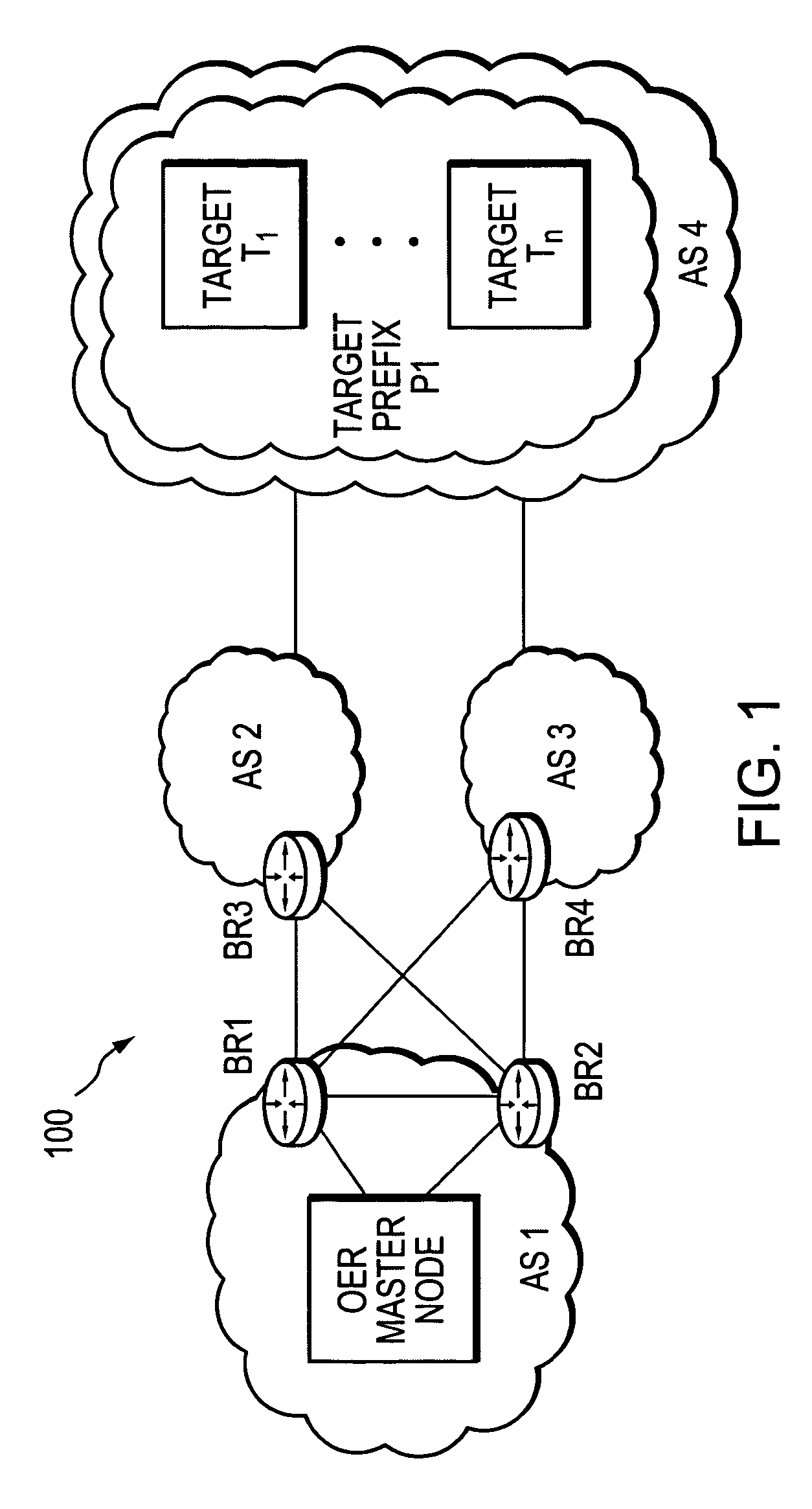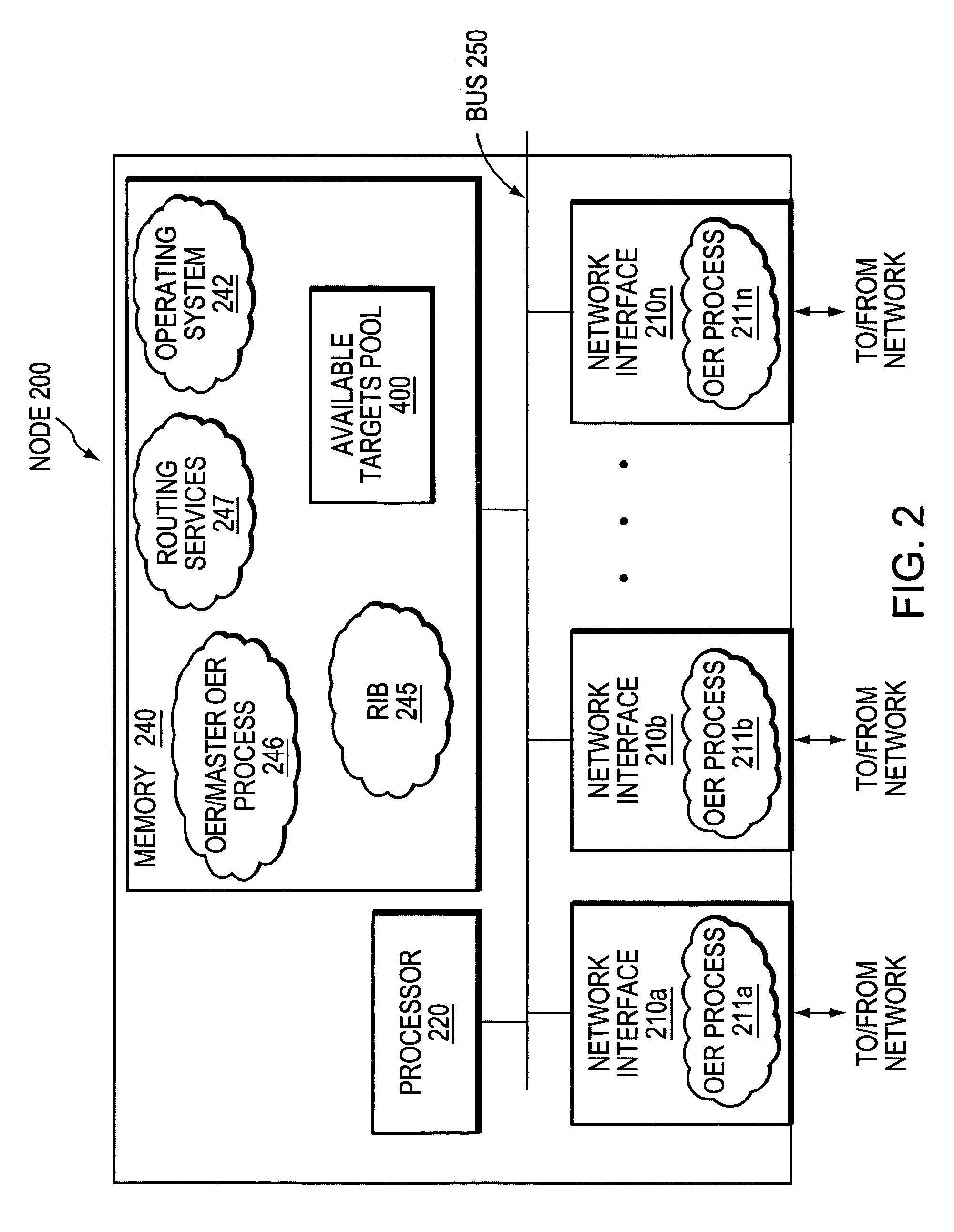Active probe target management
a target management and active probe technology, applied in the field of computer networks, to achieve the effect of efficient target managemen
- Summary
- Abstract
- Description
- Claims
- Application Information
AI Technical Summary
Benefits of technology
Problems solved by technology
Method used
Image
Examples
Embodiment Construction
[0025]FIG. 1 is a schematic block diagram of an exemplary computer network 100 comprising a multi-homed autonomous system (AS) AS1 (e.g., an enterprise or content provider network) interconnected to AS4 (e.g., a content consumer network) via a plurality of other ASes, AS2 and AS3 (e.g., ISPs). Although each of AS1-4 is illustratively an autonomous system, those skilled in the art will appreciate that the ASes may be configured as routing domains or other networks or subnetworks. AS1 comprises one or more network nodes, including a set of communicating border nodes (illustratively, edge or border routers, BRs) BR1 and BR2, through which client communications, such as data packet traffic, can pass into and out of the AS. For example, BR1 and BR2 permit communication from AS1 to AS2 (via BR3) and AS3 (via BR4). Routing operations at the border nodes BR1-2 may be managed by an optimized edge routing (OER) “Master” node, which may be connected to the border nodes by, e.g., point-to-point...
PUM
 Login to View More
Login to View More Abstract
Description
Claims
Application Information
 Login to View More
Login to View More - R&D
- Intellectual Property
- Life Sciences
- Materials
- Tech Scout
- Unparalleled Data Quality
- Higher Quality Content
- 60% Fewer Hallucinations
Browse by: Latest US Patents, China's latest patents, Technical Efficacy Thesaurus, Application Domain, Technology Topic, Popular Technical Reports.
© 2025 PatSnap. All rights reserved.Legal|Privacy policy|Modern Slavery Act Transparency Statement|Sitemap|About US| Contact US: help@patsnap.com



